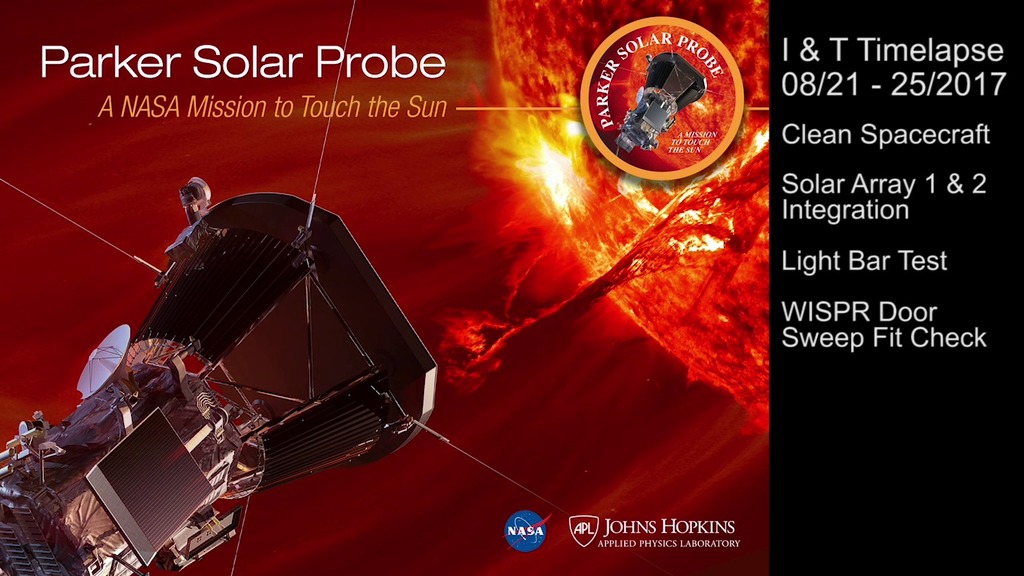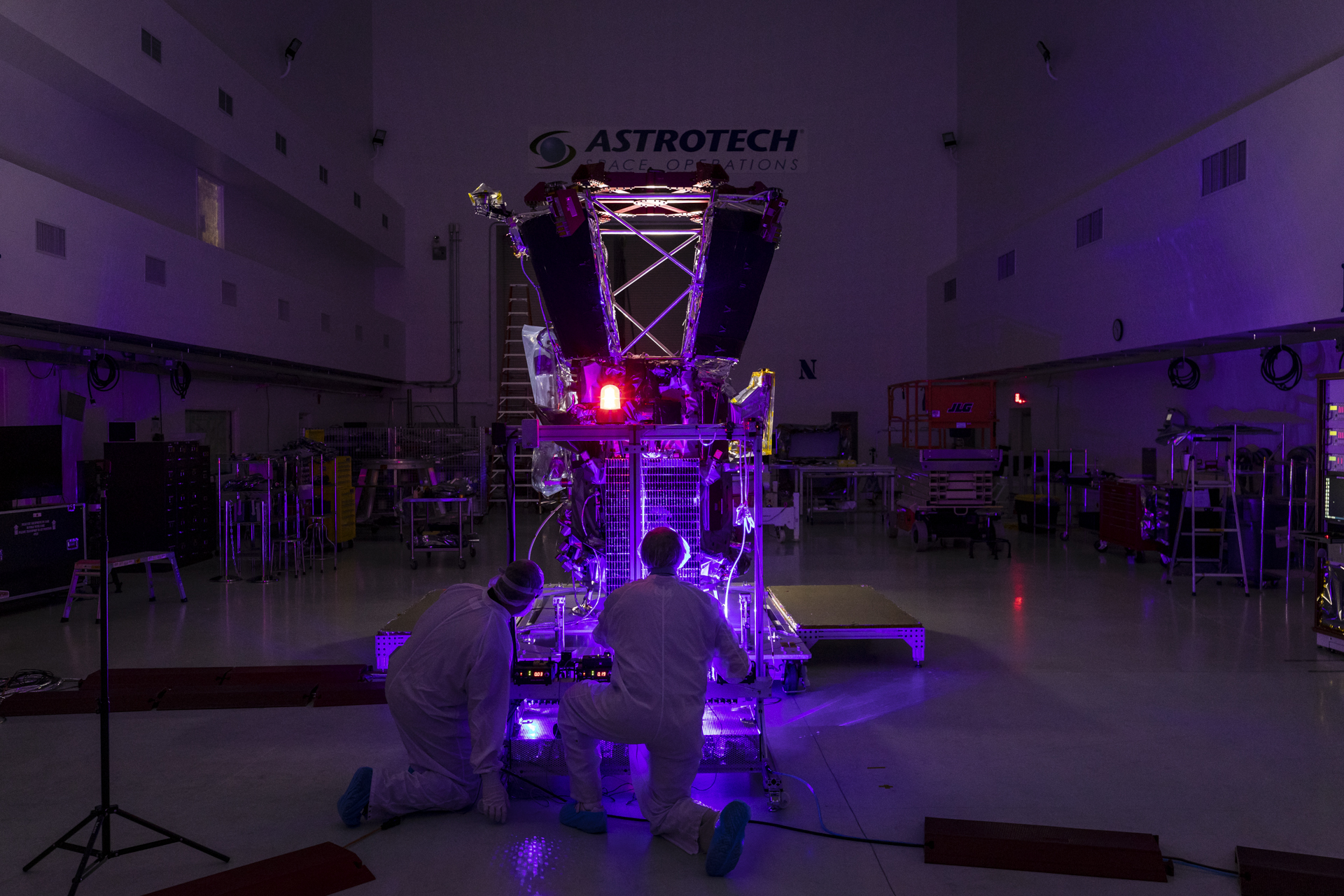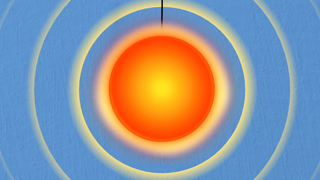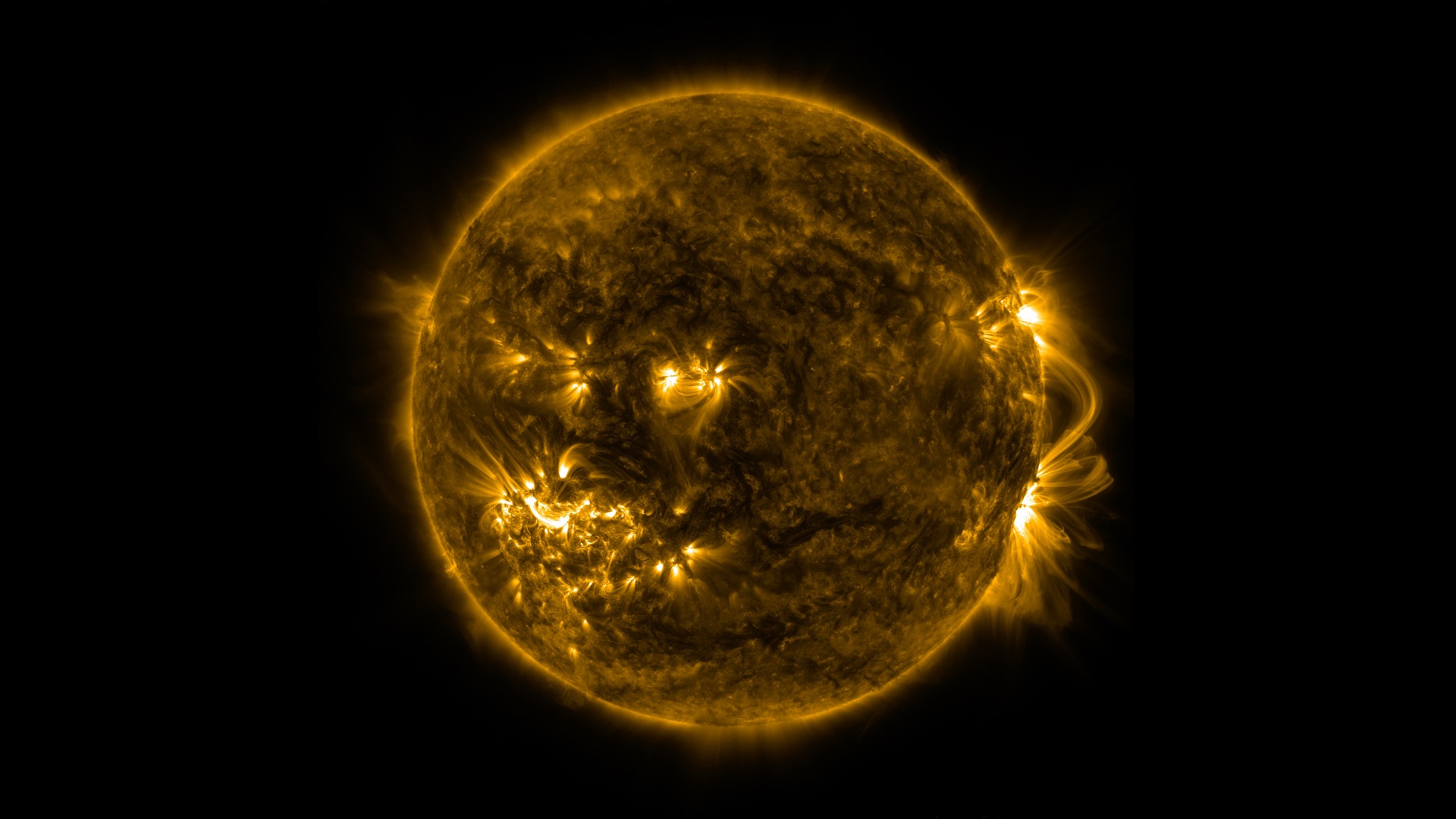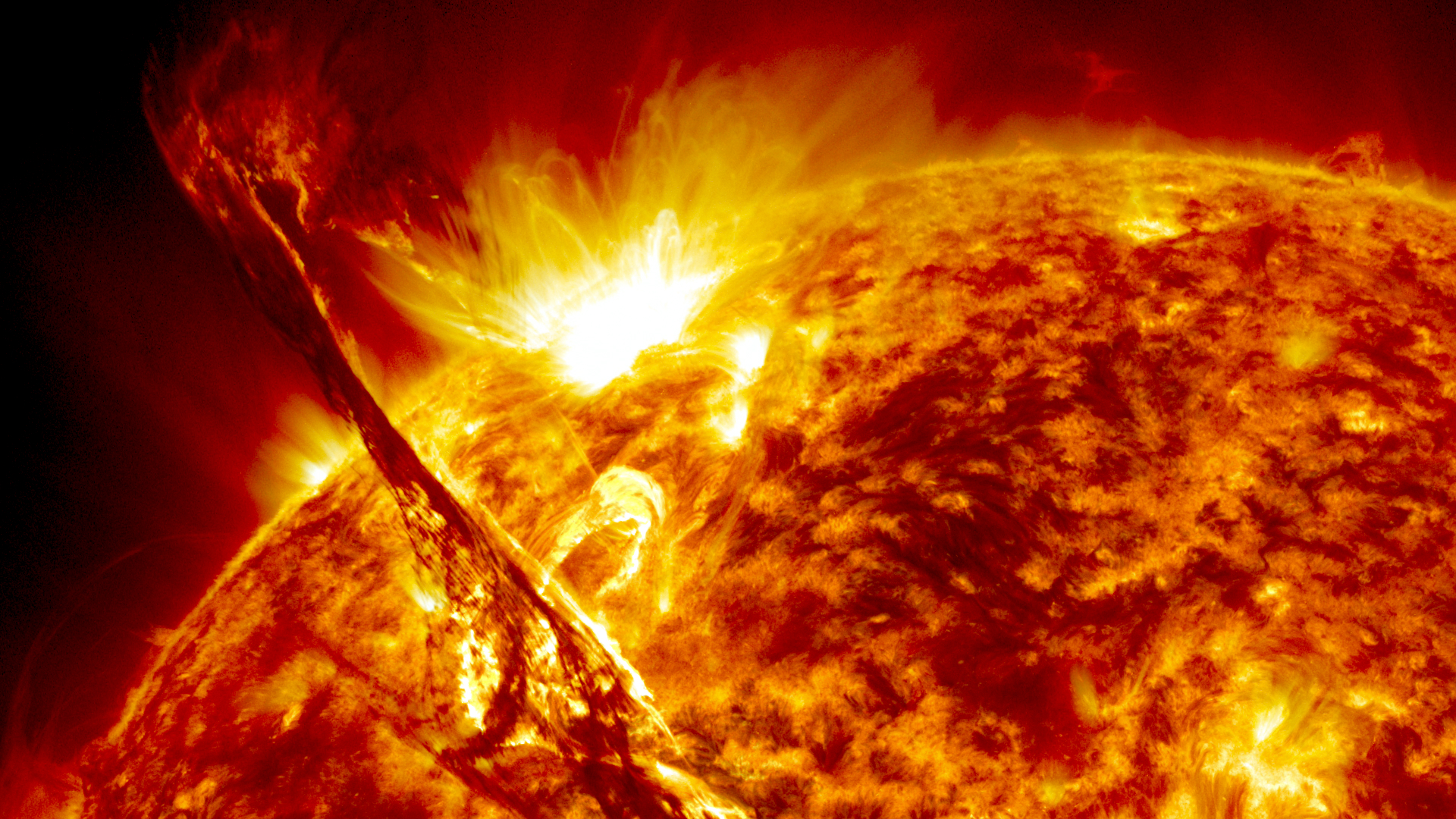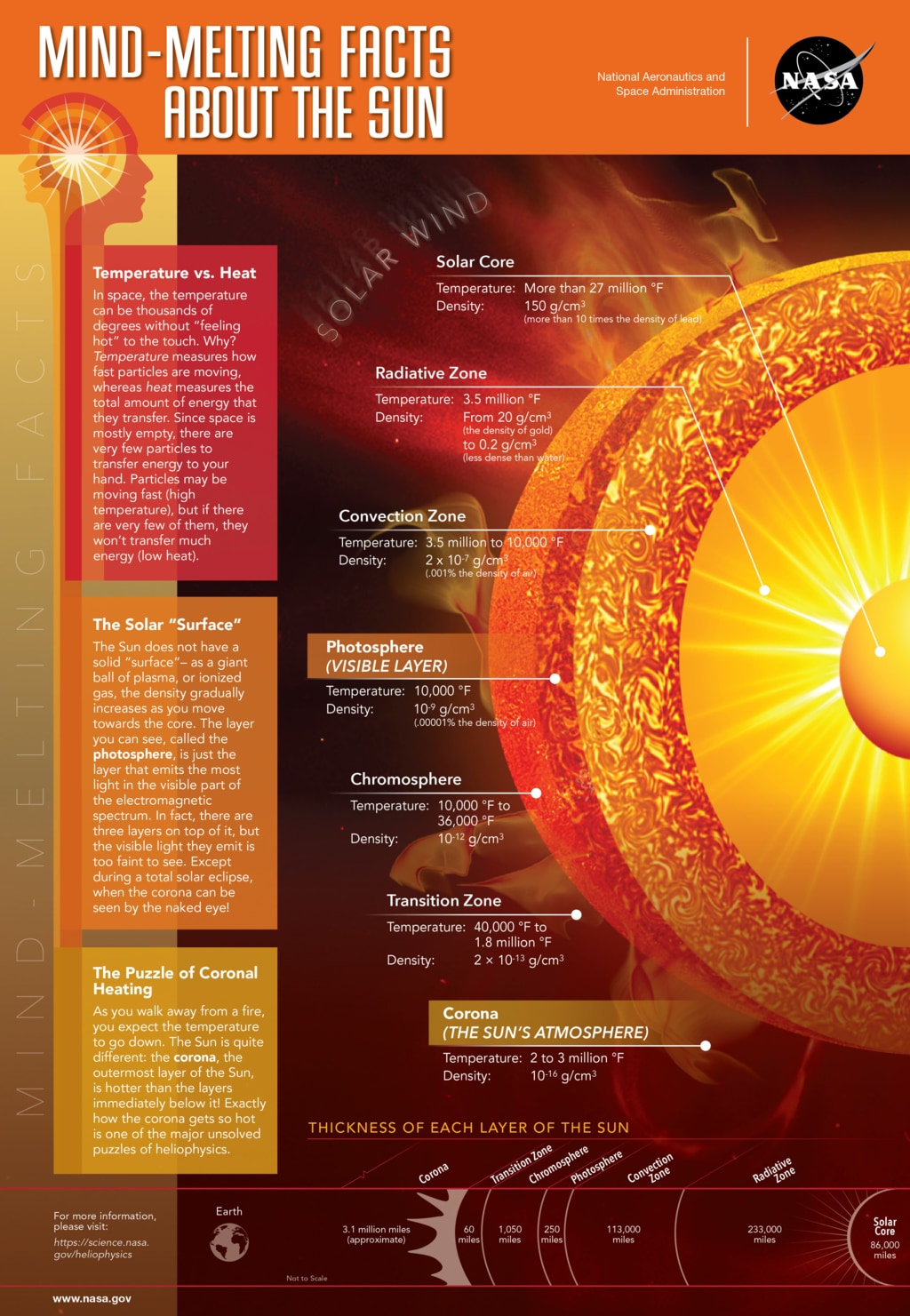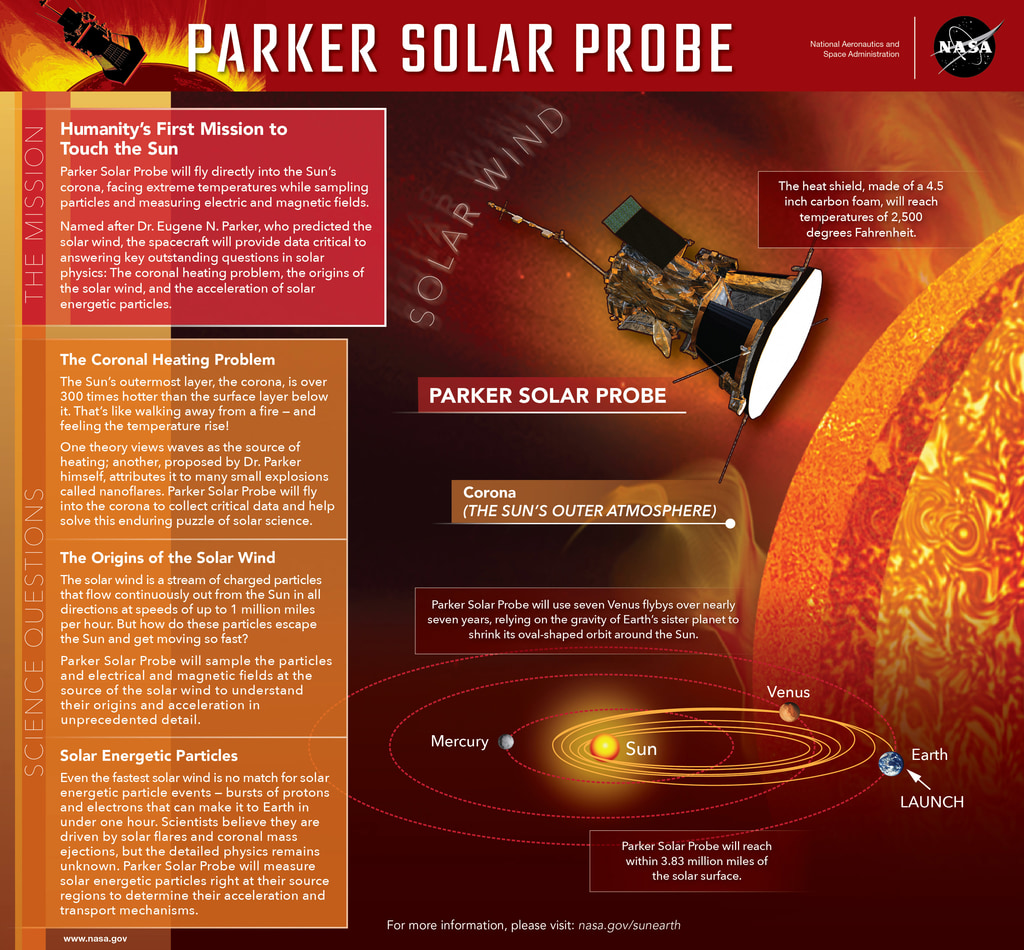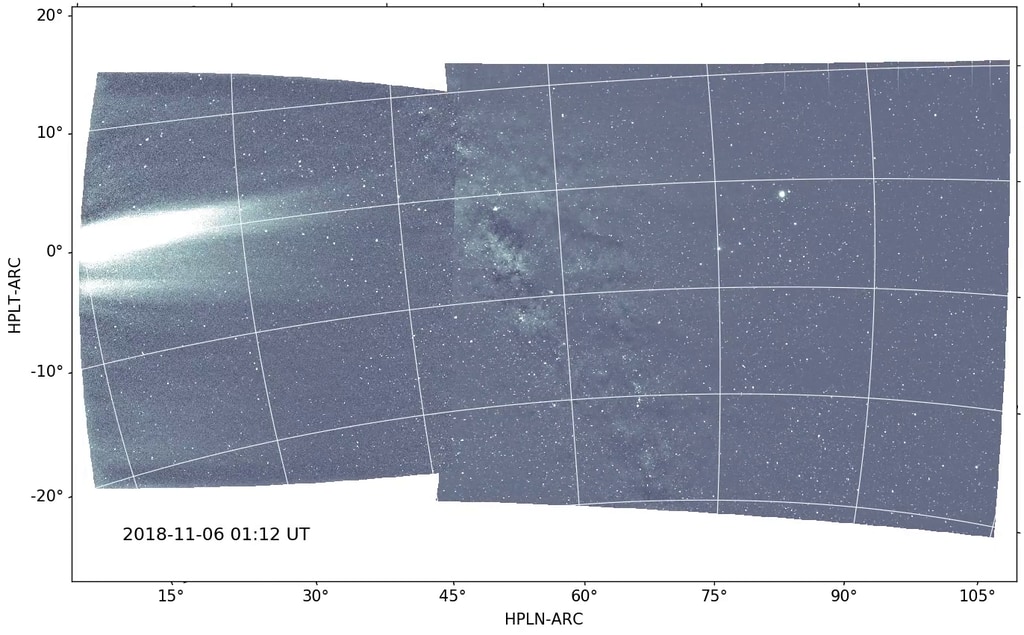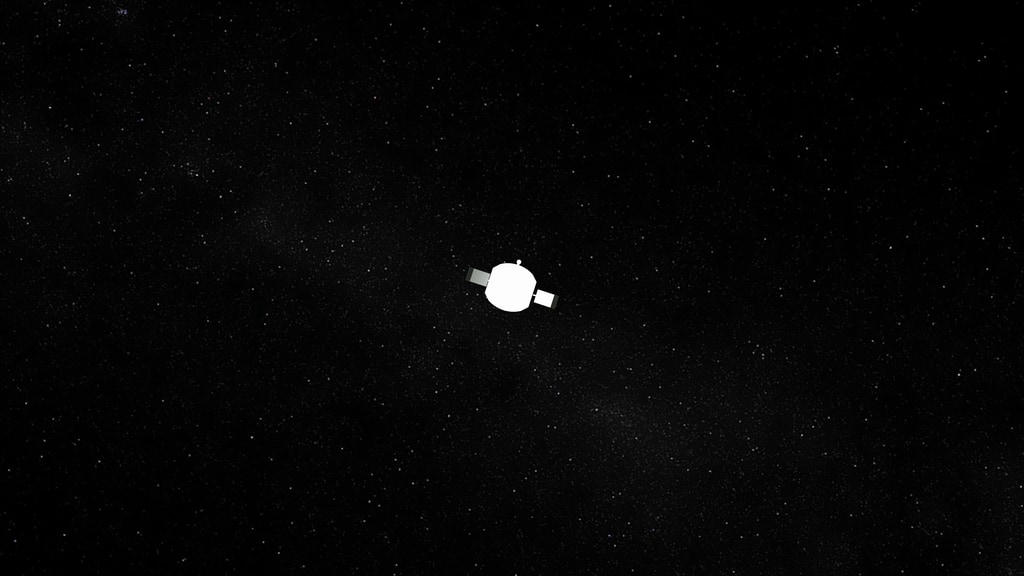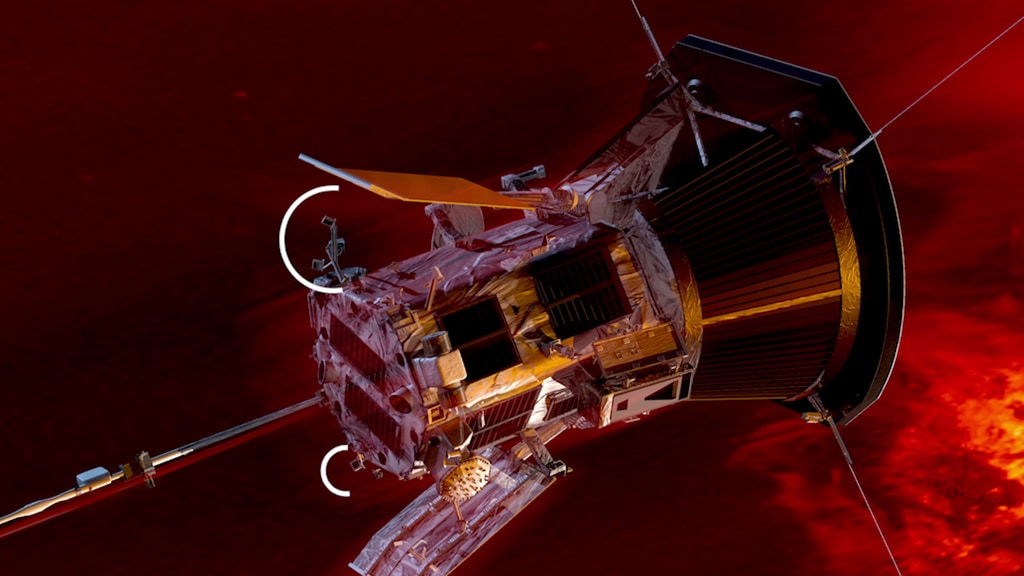Parker Solar Probe
Overview
On a mission to “touch the Sun,” NASA's Parker Solar Probe became the first spacecraft to fly through the corona – the Sun’s upper atmosphere – in 2021. In 2024, the spacecraft flew approximately 3.8 million miles from the solar surface — the closest solar approach in history — while traveling about 430,000 miles per hour — the fastest any human-made object ever has traveled.
Launched in 2018, the spacecraft used seven flybys of Venus to gravitationally direct it ever closer to the Sun. By flying through the solar corona, Parker Solar Probe can take measurements that help scientists better understand solar activity and space weather events that can impact life on Earth.
Learn more about Parker Solar Probe: PUT LINK TEXT HEREhttps://science.nasa.gov/mission/parker-solar-probe/
Parker Solar Probe Media
- Animation
- Visualization
- Produced Video
- Produced Video
- Produced Video
- Produced Video
- Produced Video
- Produced Video
- Produced Video
- Produced Video
- Produced Video
- Produced Video
- Produced Video
- Produced Video
- Produced Video
Parker Solar Probe Observations
NASA’s New Views of Venus’ Surface From Space
Go to this pageNASA’s Parker Solar Probe has taken its first visible light images of the surface of Venus from space. Smothered in thick clouds, Venus’ surface is usually shrouded from sight. But in two recent flybys of the planet, Parker used its Wide-Field Imager, or WISPR, to image the entire nightside in wavelengths of the visible spectrum – the type of light that the human eye can see – and extending into the near-infrared.The images, combined into a video, reveal a faint glow from the surface that shows distinctive features like continental regions, plains, and plateaus. A luminescent halo of oxygen in the atmosphere can also be seen surrounding the planet.Link to NASA.gov feature.Link to associated research paper. ||
Parker Solar Probe's WISPR Images Inside The Sun's Atmosphere
Go to this pageFor the first time in history, a spacecraft has touched the Sun. NASA’s Parker Solar Probe has now flown through the Sun’s upper atmosphere – the corona – and sampled particles and magnetic fields there. As Parker Solar Probe flew through the corona, its WISPR instrument captured images.The Wide-Field Imager for Parker Solar Probe (WISPR) is the only imaging instrument aboard the spacecraft. WISPR looks at the large-scale structure of the corona and solar wind before the spacecraft flies through it. About the size of a shoebox, WISPR takes images from afar of structures like coronal mass ejections, or CMEs, jets and other ejecta from the Sun. These structures travel out from the Sun and eventually overtake the spacecraft, where the spacecraft’s other instruments take in-situ measurements. WISPR helps link what’s happening in the large-scale coronal structure to the detailed physical measurements being captured directly in the near-Sun environment.To image the solar atmosphere, WISPR uses the heat shield to block most of the Sun’s light, which would otherwise obscure the much fainter corona. Specially designed baffles and occulters reflect and absorb the residual stray light that has been reflected or diffracted off the edge of the heat shield or other parts of the spacecraft.WISPR uses two cameras with radiation-hardened Active Pixel Sensor CMOS detectors. These detectors are used in place of traditional CCDs because they are lighter and use less power. They are also less susceptible to effects of radiation damage from cosmic rays and other high-energy particles, which are a big concern close to the Sun. The camera’s lenses are made of a radiation hard BK7, a common type of glass used for space telescopes, which is also sufficiently hardened against the impacts of dust.WISPR was designed and developed by the Solar and Heliophysics Physics Branch at the Naval Research Laboratory in Washington, D.C. (principal investigator Russell Howard), which will also develop the observing program. ||
NASA Missions Spot Comet NEOWISE
Go to this pageThese images from ESA and NASA’s Solar and Heliospheric Observatory show comet NEOWISE as it approached the Sun in late June 2020. The instrument that produced this data is a coronagraph, which uses a solid disk to block out the Sun’s bright face, revealing the comparatively outer atmosphere, the corona, along with objects like comet NEOWISE. Credit: ESA/NASA/SOHO || wide.00250_print.jpg (1024x576) [164.4 KB] || wide.mp4 (3840x2160) [72.2 MB] || wide.webm (3840x2160) [6.2 MB] ||
Parker Solar Probe Teams Up with Observatories Around the Solar System for Fourth Solar Encounter
Go to this pageAt the heart of understanding our space environment is the knowledge that conditions throughout space — from the Sun to the atmospheres of planets to the radiation environment in deep space — are connected.Studying this connection – a field of science called heliophysics — is a complex task: Researchers track sudden eruptions of material, radiation, and particles against the background of the ubiquitous outflow of solar material.A confluence of events in early 2020 created a nearly ideal space-based laboratory, combining the alignment of some of humanity’s best observatories — including Parker Solar Probe, during its fourth solar flyby — with a quiet period in the Sun’s activity, when it’s easiest to study those background conditions. These conditions provided a unique opportunity for scientists to study how the Sun influences conditions at points throughout space, with multiple angles of observation and at different distances from the Sun. ||
Parker Solar Probe First Light Data
Go to this pageJust over a month into its mission, Parker Solar Probe has returned first-light data from each of its four instrument suites. These early observations – while not yet examples of the key science observations Parker Solar Probe will take closer to the Sun – show that each of the instruments is working well. The instruments work in tandem to measure the Sun's electric and magnetic fields, particles from the Sun and the solar wind, and capture images of the environment around the spacecraft. The mission’s first close approach to the Sun will be in November 2018, but even now, the instruments are able to gather measurements of what’s happening in the solar wind closer to Earth. ||
Produced Videos
- Produced Video
- Produced Video
- Produced Video
- Produced Video
- Produced Video
- Produced Video
- Produced Video
- Produced Video
- Produced Video
- Produced Video
- Produced Video
- Produced Video
- Produced Video
- Produced Video
- Produced Video
B-roll: Testing And Integration
Parker Solar Probe: Testing and Integration
Go to this pageMain flight harness installation.Credit: NASA/JHUAPL || LARGE_MP4-12726_ParkerSolarProbe_17-04-05_Top_Deck_SACS_Installation_Dolbow_Ruiz_17-00072_large.00021_print.jpg (1024x576) [120.4 KB] || LARGE_MP4-12726_ParkerSolarProbe_17-04-05_Top_Deck_SACS_Installation_Dolbow_Ruiz_17-00072_large.00021_searchweb.png (320x180) [75.4 KB] || LARGE_MP4-12726_ParkerSolarProbe_17-04-05_Top_Deck_SACS_Installation_Dolbow_Ruiz_17-00072_large.00021_web.png (320x180) [75.4 KB] || LARGE_MP4-12726_ParkerSolarProbe_17-04-05_Top_Deck_SACS_Installation_Dolbow_Ruiz_17-00072_large.00021_thm.png (80x40) [5.6 KB] || 12726_ParkerSolarProbe_17-04-05_Top_Deck_SACS_Installation_Dolbow_Ruiz_17-00072_prores.mov (1920x1080) [2.9 GB] || PRORES_B-ROLL-12726_ParkerSolarProbe_17-04-05_Top_Deck_SACS_Installation_Dolbow_Ruiz_17-00072_prores.mov (1280x720) [1.5 GB] || YOUTUBE_1080-12726_ParkerSolarProbe_17-04-05_Top_Deck_SACS_Installation_Dolbow_Ruiz_17-00072_youtube_1080.mp4 (1920x1080) [373.7 MB] || APPLE_TV-12726_ParkerSolarProbe_17-04-05_Top_Deck_SACS_Installation_Dolbow_Ruiz_17-00072_appletv.m4v (1280x720) [117.9 MB] || NASA_TV-12726_ParkerSolarProbe_17-04-05_Top_Deck_SACS_Installation_Dolbow_Ruiz_17-00072.mpeg (1280x720) [697.9 MB] || LARGE_MP4-12726_ParkerSolarProbe_17-04-05_Top_Deck_SACS_Installation_Dolbow_Ruiz_17-00072_large.mp4 (1920x1080) [209.3 MB] || 17-04-05_Top_Deck_SACS_Installation_Dolbow_Ruiz_17-00072_1080p.mp4 (1920x1080) [408.5 MB] || LARGE_MP4-12726_ParkerSolarProbe_blanketing_17-08-01-08_SPP_Timelapse_17-00_large.webm (1280x720) [15.6 MB] || NASA_PODCAST-12726_ParkerSolarProbe_17-04-05_Top_Deck_SACS_Installation_Dolbow_Ruiz_17-00072_ipod_sm.mp4 (320x240) [38.5 MB] ||
Parker Solar Probe: Environmental Testing
Go to this pageNASA’s Parker Solar Probe passed laser illumination testing the week of Nov. 27, 2017. During this test, each segment of the spacecraft’s solar panels was illuminated with lasers to check that they were still electrically connected after the vigorous vibration and acoustic testing completed earlier this fall. NASA’s Parker Solar Probe is in the midst of intense environmental testing at NASA’s Goddard Space Flight Center in Greenbelt, Maryland, in preparation for its journey to the Sun. These tests have simulated the noise and shaking the spacecraft will experience during its launch from Cape Canaveral, Florida, scheduled for July 31, 2018.Parker Solar Probe’s integration and testing team must check over the spacecraft and systems to make sure everything is still in optimal working condition after experiencing these rigorous conditions – including a check of the solar arrays, which will provide electrical power to the spacecraft.Parker Solar Probe will explore the Sun's outer atmosphere and make critical observations that will answer decades-old questions about the physics of stars. The resulting data will also help improve how we forecast major eruptions on the Sun and subsequent space weather events that can impact life on Earth, as well as satellites and astronauts in space. The mission is named for Eugene N. Parker, whose profound insights into solar physics and processes have helped shape the field of heliophysics.Link to Parker Solar Probe blog post. ||
Parker Solar Probe Travels to Florida
Go to this pageParker Solar Probe Arrives in FloridaOn April 4, 2018, Parker Solar Probe project scientist Nicky Fox of Johns Hopkins APL describes the spacecraft's April 3 journey to Florida and arrival at Astrotech Space Operations, the probe's new home before a scheduled launch on July 31, 2018 from NASA's Kennedy Space Center. Credit: NASA/Johns Hopkins APL/Lee HobsonWatch this video on the Johns Hopkins APL YouTube channel. || LARGE_MP4_12917_Nicky_Fox_Welcomes_PSP_To_ASO_UHD_large.00033_print.jpg (1024x576) [103.8 KB] || LARGE_MP4_12917_Nicky_Fox_Welcomes_PSP_To_ASO_UHD_large.00033_thm.png (80x40) [7.1 KB] || LARGE_MP4_12917_Nicky_Fox_Welcomes_PSP_To_ASO_UHD_large.00033_web.png (320x180) [85.2 KB] || LARGE_MP4_12917_Nicky_Fox_Welcomes_PSP_To_ASO_UHD_large.00033_searchweb.png (320x180) [85.2 KB] || PRORES_B-ROLL_12917_Nicky_Fox_Welcomes_PSP_To_ASO_UHD_prores.mov (1280x720) [642.5 MB] || 12917_Nicky_Fox_Welcomes_PSP_To_ASO_UHD_appletv_subtitles.m4v (1280x720) [48.0 MB] || NASA_TV_12917_Nicky_Fox_Welcomes_PSP_To_ASO_UHD.mpeg (1280x720) [309.1 MB] || 12917_Nicky_Fox_Welcomes_PSP_To_ASO_UHD_appletv.m4v (1280x720) [48.0 MB] || YOUTUBE_1080_12917_Nicky_Fox_Welcomes_PSP_To_ASO_UHD_youtube_1080.mp4 (1920x1080) [146.4 MB] || LARGE_MP4_12917_Nicky_Fox_Welcomes_PSP_To_ASO_UHD_large.mp4 (3840x2160) [97.6 MB] || Nicky_Fox_Welcomes_PSP_To_ASO_UHD.mp4 (3840x2160) [502.0 MB] || YOUTUBE_4K_12917_Nicky_Fox_Welcomes_PSP_To_ASO_UHD_youtube_4k.mp4 (3840x2160) [373.1 MB] || LARGE_MP4_12917_Nicky_Fox_Welcomes_PSP_To_ASO_UHD_large.webm (3840x2160) [12.3 MB] || 12917_Parker_Solar_Probe_Arrives_in_Florida.en_US.srt [1.3 KB] || 12917_Parker_Solar_Probe_Arrives_in_Florida.en_US.vtt [1.3 KB] || 12917_Nicky_Fox_Welcomes_PSP_To_ASO_UHD_Prores.mov (3840x2160) [4.9 GB] || 12917_Nicky_Fox_Welcomes_PSP_To_ASO_UHD_ipod_sm.mp4 (320x240) [15.8 MB] ||
Solar Power: Parker Solar Probe Tests Its Arrays
Go to this pageNASA’s Parker Solar Probe gets its power from the Sun, so the solar arrays that collect energy from our star need to be in perfect working order. This month, members of the mission team tested of the arrays at Astrotech Space Operations in Titusville, Florida, to ensure the system performs as designed and provides power to the spacecraft during its historic mission to the Sun.Parker Solar Probe is powered by two solar arrays, totaling just under 17 square feet (1.55 square meters) in area. They are mounted to motorized arms that will retract almost all of their surface behind the Thermal Protection System – the heat shield – when the spacecraft is close to the Sun. ||
Power Up: Solar Arrays Installed on NASA’s Mission to Touch the Sun
Go to this pageNASA’s Parker Solar Probe depends on the Sun, not just as an object of scientific investigation, but also for the power that drives its instruments and systems. On Thursday, May 31, 2018, the spacecraft’s solar arrays were installed and tested. These arrays will power all of the spacecraft’s systems, including the suites of scientific instruments studying the solar wind and the Sun’s corona as well as the Solar Array Cooling System (SACS) that will protect the arrays from the extreme heat at the Sun. “Unlike solar-powered missions that operate far from the Sun and are focused only on generating power from it, we need to manage the power generated along with the substantial heat that comes from being so close to the Sun,” said Andy Driesman, project manager from the Johns Hopkins Applied Physics Laboratory in Laurel, Maryland. “When we’re out around the orbit of Venus, we fully extend the arrays to get the power we need. But when we’re near the Sun, we tuck the arrays back until only a small wing is exposed, and that portion is enough to provide needed electrical power.”The solar arrays are cooled by a gallon of water that circulates through tubes in the arrays and into large radiators at the top of the spacecraft. They are just over three and a half feet (1.12 meters) long and nearly two and a half feet (0.69 meters) wide. Mounted on motorized arms, the arrays will retract almost all of their surface behind the Thermal Protection System – the heat shield – when the spacecraft is close to the Sun. The solar array installation marks some of the final preparation and testing of Parker Solar Probe leading up to the mission’s July 31 launch date. ||
Cutting-Edge Heat Shield Installed on NASA’s Parker Solar Probe
Go to this pageThe launch of Parker Solar Probe, the mission that will get closer to the Sun than any human-made object has ever gone, is quickly approaching, and on June 27, 2018, Parker Solar Probe’s heat shield – called the Thermal Protection System, or TPS – was installed on the spacecraft. A mission sixty years in the making, Parker Solar Probe will make a historic journey to the Sun’s corona, a region of the solar atmosphere. With the help of its revolutionary heat shield, now permanently attached to the spacecraft in preparation for its August 2018 launch, the spacecraft’s orbit will carry it to within 4 million miles of the Sun's fiercely hot surface, where it will collect unprecedented data about the inner workings of the corona. The eight-foot-diameter heat shield will safeguard everything within its umbra, the shadow it casts on the spacecraft. At Parker Solar Probe’s closest approach to the Sun, temperatures on the heat shield will reach nearly 2,500 degrees Fahrenheit, but the spacecraft and its instruments will be kept at a relatively comfortable temperature of about 85 degrees Fahrenheit. The heat shield is made of two panels of superheated carbon-carbon composite sandwiching a lightweight 4.5-inch-thick carbon foam core. The Sun-facing side of the heat shield is also sprayed with a specially formulated white coating to reflect as much of the Sun’s energy away from the spacecraft as possible. The heat shield itself weighs only about 160 pounds – here on Earth, the foam core is 97% air. Because Parker Solar Probe travels so fast – 430,000 miles per hour at its closest approach to the Sun, fast enough to travel from Philadelphia to Washington, D.C., in about one second – the shield and spacecraft have to be light to achieve the needed orbit. The reinstallation of the Thermal Protection System – which was briefly attached to the spacecraft during testing at the Johns Hopkins Applied Physics Lab in Laurel, Maryland, in fall 2017 – marks the first time in months that Parker Solar Probe has been fully integrated. The heat shield and spacecraft underwent testing and evaluation separately at NASA’s Goddard Space Flight Center in Greenbelt, Maryland, before shipping out to Astrotech Space Operations in Titusville, Florida, in April 2018. With the recent reunification, Parker Solar Probe inches closer to launch and toward the Sun. Parker Solar Probe is part of NASA’s Living with a Star Program, or LWS, to explore aspects of the Sun-Earth system that directly affect life and society. LWS is managed by NASA Goddard for the Heliophysics Division of NASA’s Science Mission Directorate in Washington, D.C. The Johns Hopkins Applied Physics Laboratory manages the Parker Solar Probe mission for NASA. APL designed and built the spacecraft and will also operate it. ||
Parker Solar Probe Prepares to Head Toward Launch Pad
Go to this pageNASA’s Parker Solar Probe is lifted to the third stage rocket motor on July 11, 2018, at Astrotech Space Operations in Titusville, Florida. In addition to using the largest operational launch vehicle, the Delta IV Heavy, Parker Solar Probe will use a third stage rocket to gain the speed needed to reach the Sun, which takes 55 times more energy than reaching Mars.Credit: NASA/Johns Hopkins APL/Ed Whitman || aPSPLift3.jpg (1920x1280) [1.7 MB] ||
About The Sun
Space Weather Vocabulary
Go to this pageWe are all familiar with weather on Earth, but how much do you know about weather in space? Suitable for all ages, this introduction to space weather covers vocabulary like coronal mass ejection (CME), solar wind, and solar flare. It also outlines potential effects of solar storms on our planet.This video is available in English and Spanish, both with English subtitles.Todo el mundo está familiarizado con el clima de la Tierra pero, ¿cuánto sabes sobre meteorología espacial? Este video introductorio al clima espacial, apropiado para todas las edades y niveles, explica términos científicos como eyección de masa coronal, viento solar o erupción solar.También provee una descripción general sobre los efectos potenciales que tienen las tormentas solares en nuestro planeta.El vídeo está disponible en español e inglés, ambas versiones con subtítulos en inglés. ||
SDO 4k Slow-rotation Sun Resource Page
Go to this pageStill Image for page || SDO_Slow_Gallery.jpg (1920x1080) [235.4 KB] || SDO_Slow_Gallery_searchweb.png (320x180) [43.0 KB] || SDO_Slow_Gallery_thm.png (80x40) [3.6 KB] ||
SDO Anniversary Series
Go to this pageThe sun is always changing and NASA's Solar Dynamics Observatory is always watching. Launched on Feb. 11, 2010, SDO keeps a 24-hour eye on the entire disk of the sun, with a prime view of the graceful dance of solar material coursing through the sun's atmosphere, the corona.Year 1 ||
Graphics
NASA's Heliophysics Fleet
Go to this pageHeliophysics encompasses science that improves our understanding of fundamental physical processes throughout the solar system, and enables us to understand how the Sun, as the major driver of the energy throughout the solar system, impacts our technological society. The scope of heliophysics is vast, spanning from the Sun’s interior to Earth’s upper atmosphere, throughout interplanetary space, to the edges of the heliosphere, where the solar wind interacts with the local interstellar medium. Heliophysics incorporates studies of the interconnected elements in a single system that produces dynamic space weather and that evolves in response to solar, planetary, and interstellar conditions. ||
Mind-Melting Facts About the Sun
Go to this pageImage of poster. See link below for PDF version. || MM_FATS_Infographic_w_NASA_ID_print.jpg (1024x1481) [343.3 KB] || MM_FATS_Infographic_w_NASA_ID.jpg (2966x4291) [1.7 MB] || MM_FATS_Infographic_w_NASA_ID.png (2966x4291) [10.3 MB] || MM_FATS_Infographic_w_NASA_ID_searchweb.png (320x180) [100.6 KB] || MM_FATS_Infographic_w_NASA_ID_thm.png (80x40) [6.6 KB] || Fascinating Facts about the Sun. ||
Parker Solar Probe - Close to the Sun
Go to this pageImage representing Parker Solar Probe's distance from the Sun. || Parker_Close_to_Sun_Infographic_print.jpg (1024x662) [60.0 KB] || Parker_Close_to_Sun_Infographic.jpg (5100x3300) [1001.2 KB] || Parker_Close_to_Sun_Infographic_borderless.jpg (4628x2572) [1.0 MB] || Parker_Close_to_Sun_Infographic_searchweb.png (320x180) [86.8 KB] || Parker_Close_to_Sun_Infographic_thm.png (80x40) [7.1 KB] || parker-solar-probe-close-to-the-sun.hwshow [306 bytes] ||
Solar Corona Science Timeline
Go to this pageA timeline of science of the solar wind and corona. || Solar_Wind_and_Corona_Timeline_print.jpg (1024x1448) [521.5 KB] || Solar_Wind_and_Corona_Timeline.jpg (4193x5931) [3.4 MB] || Solar_Wind_and_Corona_Timeline_searchweb.png (320x180) [97.1 KB] || Solar_Wind_and_Corona_Timeline_thm.png (80x40) [7.6 KB] ||
Parker Solar Probe
Go to this pageSpecifications on the Parker Solar Probe mission and its science questions. || Parker_Solar_Probe_Infographic_print.jpg (1024x950) [474.3 KB] || Parker_Solar_Probe_Infographic.jpg (3479x3230) [2.1 MB] || Parker_Solar_Probe_Infographic_searchweb.png (320x180) [115.9 KB] || Parker_Solar_Probe_Infographic_thm.png (80x40) [7.5 KB] ||
Press Briefings
Visuals shown at media events
Parker Solar Probe First Findings - Media Telecon
Go to this pageNASA to Present First Parker Solar Probe Findings in Media TeleconferenceNASA will announce the first results from the Parker Solar Probe mission, the agency's mission to "touch" the Sun, during a media teleconference at 1:30 pm EST on Wednesday, Dec. 4, 2019.Parker has traveled closer to our star than any human-made object before it. The teleconference will discuss the first papers from the principal investigators of the mission’s four instruments. The papers will be published online Wednesday in Nature at 1 pm EST.The teleconference audio will stream live at:https://www.nasa.gov/nasaliveParticipants in the call are: •Nicola Fox, director of the Heliophysics Division, Science Mission Directorate, NASA Headquarters, Washington•Stuart Bale, principal investigator of the FIELDS instrument at the University of California, Berkeley•Justin Kasper, principal investigator of the SWEAP instrument at the University of Michigan in Ann Arbor•Russ Howard, principal investigator of the WISPR instrument at the Naval Research Laboratory in Washington•David McComas, principal investigator of the ISʘIS instrument at Princeton University in Princeton, N.J. ||
AGU 2019 - New Science from NASA's Parker Solar Probe Mission
Go to this pageLittle more than a year into its mission, Parker Solar Probe has returned gigabytes of data on the Sun and its atmosphere. The very first science from the Parker mission is just beginning to be shared, and five researchers presented new findings from the mission at the fall meeting of the American Geophysical Union on Dec. 11, 2019. Their research hints at the processes behind both the Sun's continual outflow of material — the solar wind — and more infrequent solar storms that can disrupt technology and endanger astronauts, along with new insight into space dust that creates the Geminids meteor shower.Speakers:Nicholeen Viall - Research Astrophysicist, NASA's Goddard Space Flight CenterTim Horbury - Professor of Physics, Imperial College LondonKelly Korreck - Astrophysicist, Head of Science Operations for SWEAP Suite, Harvard and Smithsonian Center for AstrophysicsNathan Schwadron - Presidential Chair, Norman S. and Anna Marie Waite Professor, University of New HampshireKarl Battams - Computational Scientist, U.S. Naval Research Laboratory ||
Parker Solar Probe Pre-Launch Briefing
Go to this pageHosted by Karen Fox - Heliophysics Communications Lead, NASA Goddard/NASA HQSpeakers:Scott Messer - Program Manager, NASA Programs, United Launch AllianceOmar Baez - Launch Director, NASA, Kennedy Space CenterKathy Rice - Launch Weather Officer, 45th Weather Squadron, Cape Canaveral Air Force StationThomas Zurbuchen - Associate Administrator for the Science Mission Directorate at NASANicola Fox - Parker Solar Probe Project Scientist, The Johns Hopkins University Applied Physics LabAndy Dreisman - Project Manger The Johns Hopkins University Applied Physics Lab ||
Parker Solar Probe Science Briefing - Visual Resources
Go to this pageJuly 20, 2018 - Live from NASA Kennedy - 1:00 p.m. ESTHosted by Karen Fox - Heliophysics Communications Lead, NASA Goddard/NASA HQSpeakers:Nicola Fox - Parker Solar Probe Project Scientist, The Johns Hopkins University Applied Physics LabAlex Young - Solar Scientist from NASA GoddardThomas Zurbuchen - Associate Administrator for the Science Mission Directorate at NASABetsy Congdon - Thermal Protection System Engineer at The Johns Hopkins University Applied Physics Lab ||
Sunset Show for Parker Solar Probe
Go to this pageEarly in the morning of Aug. 12, NASA launched Parker Solar Probe, humanity’s first mission to the Sun. This spacecraft will fly closer to the Sun than any before it, in a daring journey facing brutal heat and radiation. Parker Solar Probe sets its sights on the Sun’s scorching outer atmosphere, called the corona, in order to solve our star’s greatest mysteries. It will revolutionize our understanding not only of the Sun, but also the space around us, and even the lives of stars beyond our solar system — crucial information as we explore more of space.On Aug. 10, scientists and mission experts gathered at NASA’s Kennedy Space Center for a live sunset show — one of the last times the Sun set on Parker Solar Probe before it launched — to talk about what this landmark mission will teach us of the Sun. Guests included: - Jim Spann, Chief Solar Scientist, NASA HQ- Yari Collado-Vega, Space Weather Scientist, NASA Goddard- C. Alex Young, Solar Scientist, NASA Goddard- Nicola Fox, Parker Solar Probe Project Scientist, JHU Applied Physics Laboratory (APL) ||
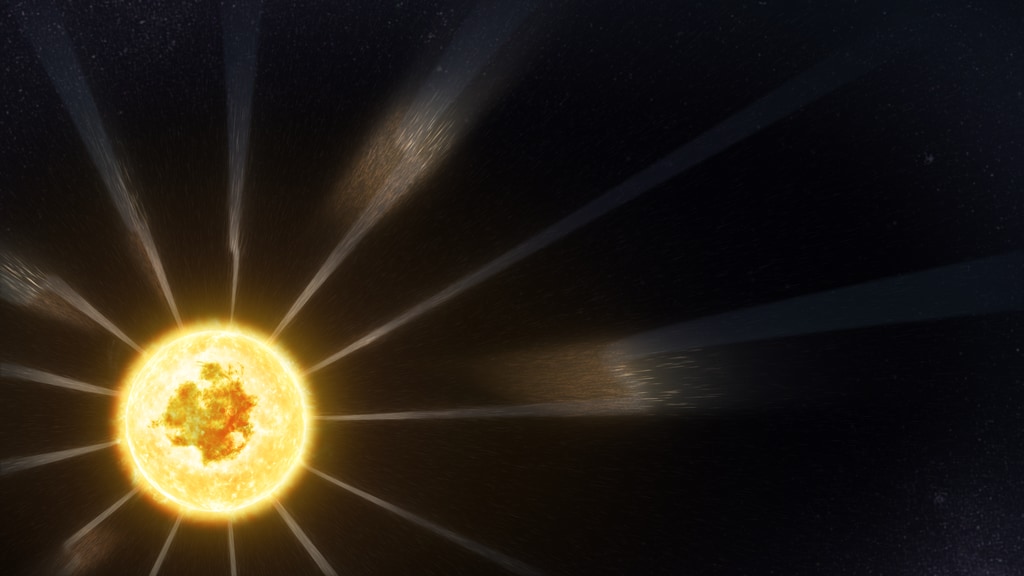
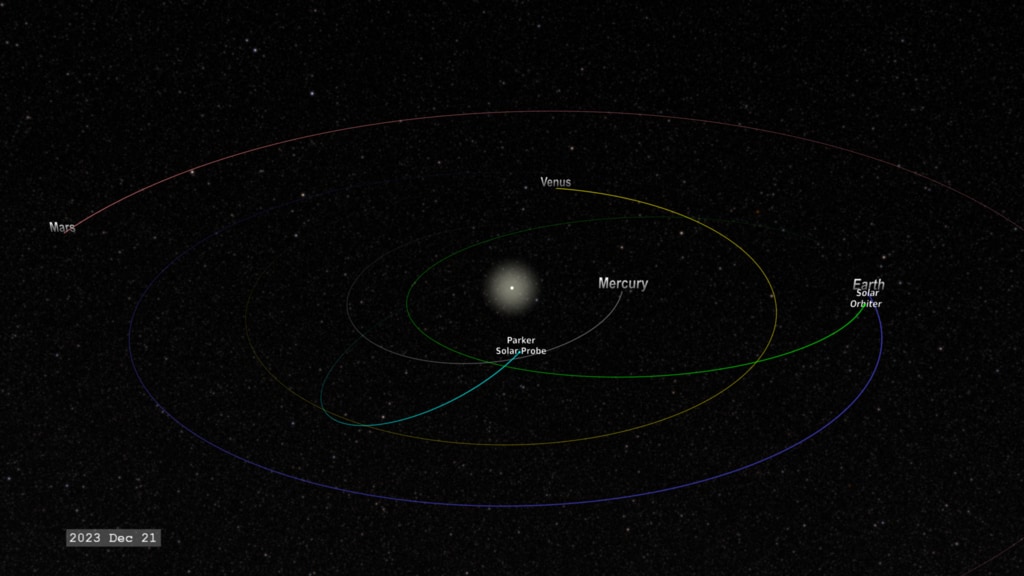
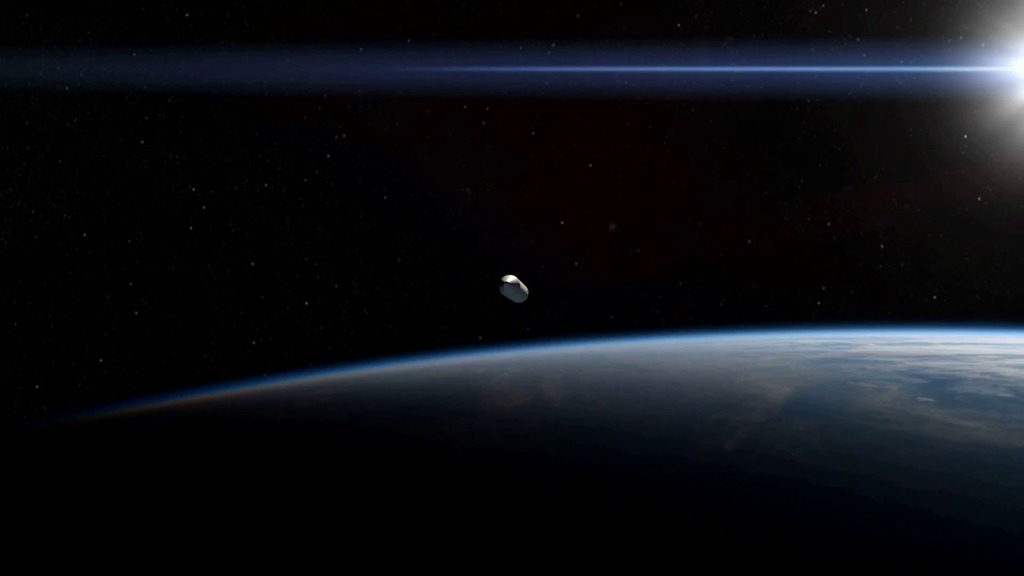

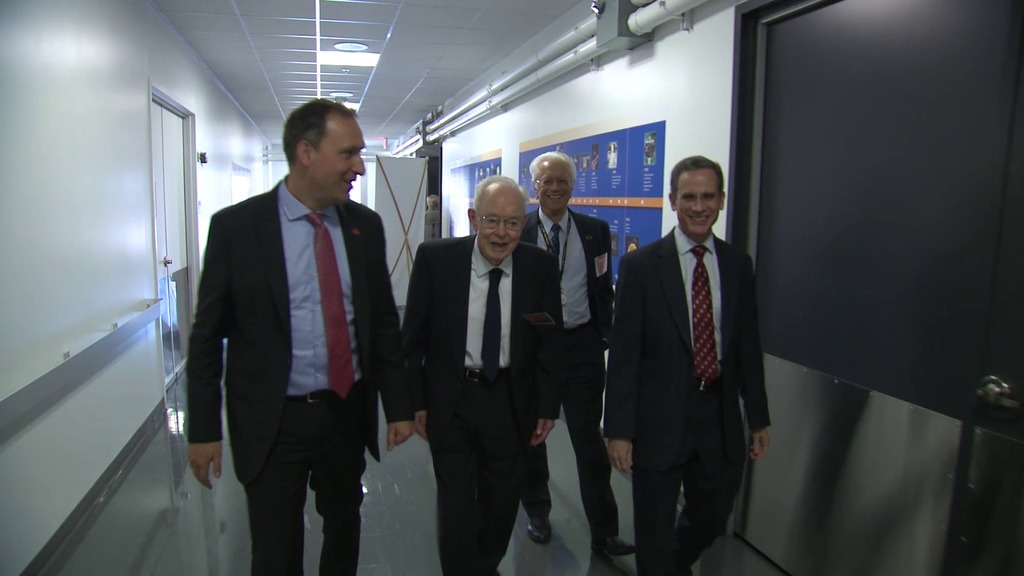

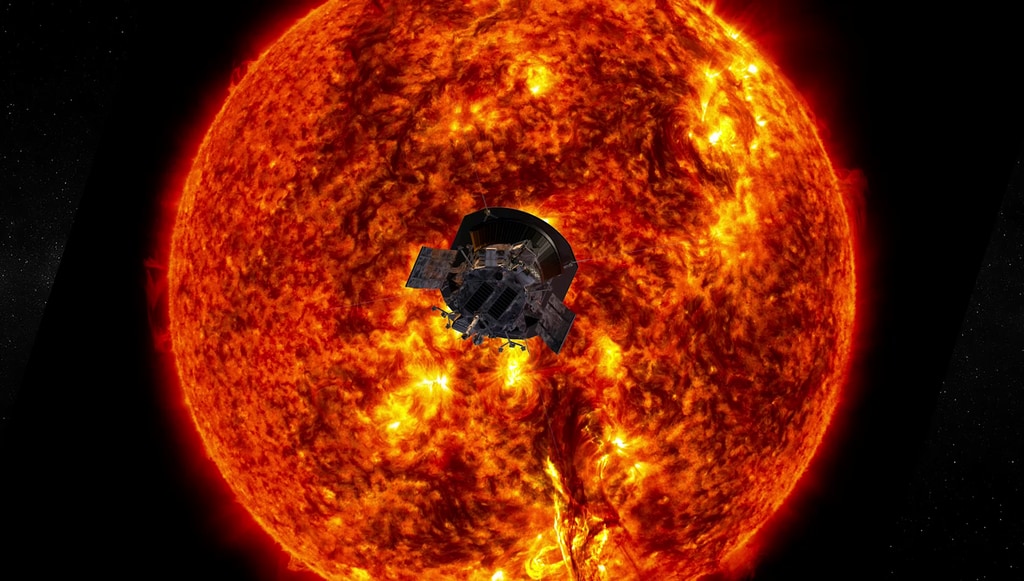
![Nicola Fox - Parker Solar Probe Project Scientist, Johns Hopkins Applied Physics Laboratory
[0:00]
Parker Solar Probe really is a historic mission, it was first dreamed of in 1958 and it has remained the highest priority mission throughout that period. The reason it hasn’t flown is just because it has taken a while for technology to catch up with the dreams that we had for this amazing mission.
[0:23]
The coolest thing about my job is just the sheer feeling that this is a 60-year journey that people have gone on to make Parker Solar Probe a reality and to be there at the finish line as we’re on the pad and ready to launch—that is definitely the coolest thing about my job.
Betsy Congdon - Lead Thermal Protection Engineer, Johns Hopkins Applied Physics Laboratory
[0:51]
After working on this for 10 years, it is really a pleasure to see it actually coming to fruition. To be one small part of this huge engineering team that is making science dreams come true is just amazing. I can’t wait to re-write textbooks and change the way we look at the Sun forever. I’m a whole ball of excited, and I honestly don’t know exactly how I’m going to feel at launch but I’m really excited to pass this off to the mission operations team and see all the science data that comes down and just get to enjoy all that Solar Probe brings us.
[1:32]
There are many enabling technologies, the solar arrays are really important, the autonomy is very important, one of the ones that is obviously also critical is the heat shield, and developing the technology to actually protect the probe at the Sun.
[1:49]
A sandwich panel is a lot like a honeycomb panel you find in a traditional spacecraft or on airplanes. You have the outer face sheets, and then you have a core. In this case the two outer face sheets are carbon-carbon composite, which is a lot like the graphite epoxy you might find in your golf clubs, it’s just been super-heated, and then the inside is a carbon foam. So the Parker Solar Probe heat shield has a white coating that’s on the Sun-facing surface of this giant frisbee that’s protecting the rest of the spacecraft. And that white coating was specially designed here at the lab, in collaboration with REDD and the space department as well as the Whiting school at Johns Hopkins proper, to actually work at the Sun, specifically designed for Solar Probe. And the concept is basically you’d rather be in a white car on a hot day, than a black car on a hot day—it just knocks down the heat that much more. So it’s helping us stay cool at the Sun.
[2:43]
The titanium truss was also specially designed for solar probe. It’s a really neat piece. It’s a welded titanium truss that’s about 4 feet tall, but it only weighs about 50 pounds. And the key there is we’re trying to minimize the conduction between the heat shield and the spacecraft, so you want to have as little stuff there as possible.
[3:05]
But then also the first closest approach will be a very interesting time. We’ll obviously be working towards closest approach a long time and getting science back from the beginning, but the heat shield has to do its hardest work 7 years into the mission, which has always been an interesting construct of the mission.
[3:27]
When we’re at closest approach, the front surface of the heat shield will be at about 2,500 degrees Fahrenheit. The back surface of the heat shield will be about 600 degrees Fahrenheit. But the spacecraft bus is basically sitting at 85 degrees Fahrenheit. So the shield is actually really keeping everything very cool, most of the stuff is on the bus.
[3:50]
The mission that is in its current form is actually a solar powered mission, whereas some of the earlier concepts were nuclear powered. So they just had different mission designs, there were different constraints on the mission, and so once this current form iteration with a flat heat shield, or 8-foot frisbee as we like to say, because it’s basically a giant sandwich panel protecting the spacecraft as an umbrella, really developed as a part of this solar-powered mission that is its most recent rendition. And so, reaching out with expertise all around the lab, that whole team really brought this heat shield to fruition.
Yanping Guo - Design and Navigation Manager, Johns Hopkins Applied Physics Laboratory
[4:34]
Of all the space missions I’ve worked on, Parker Solar Probe is the most challenging and complex mission to design and to fly. The launch energy required to reach the Sun is 55 times that required to get to Mars, and two times to Pluto.
Annette Dolbow - Integration and Test Lead Engineer, Johns Hopkins Applied Physics Laboratory
[5:00]
So the tensest moment for me after launch is when we’re sitting in the control room and we’re waiting for that green telemetry to show that the spacecraft is turned on and we can actually talk to it.](/vis/a010000/a013000/a013036/18-03953_PSP_Media_Soundbites_v1.00001_print.jpg)
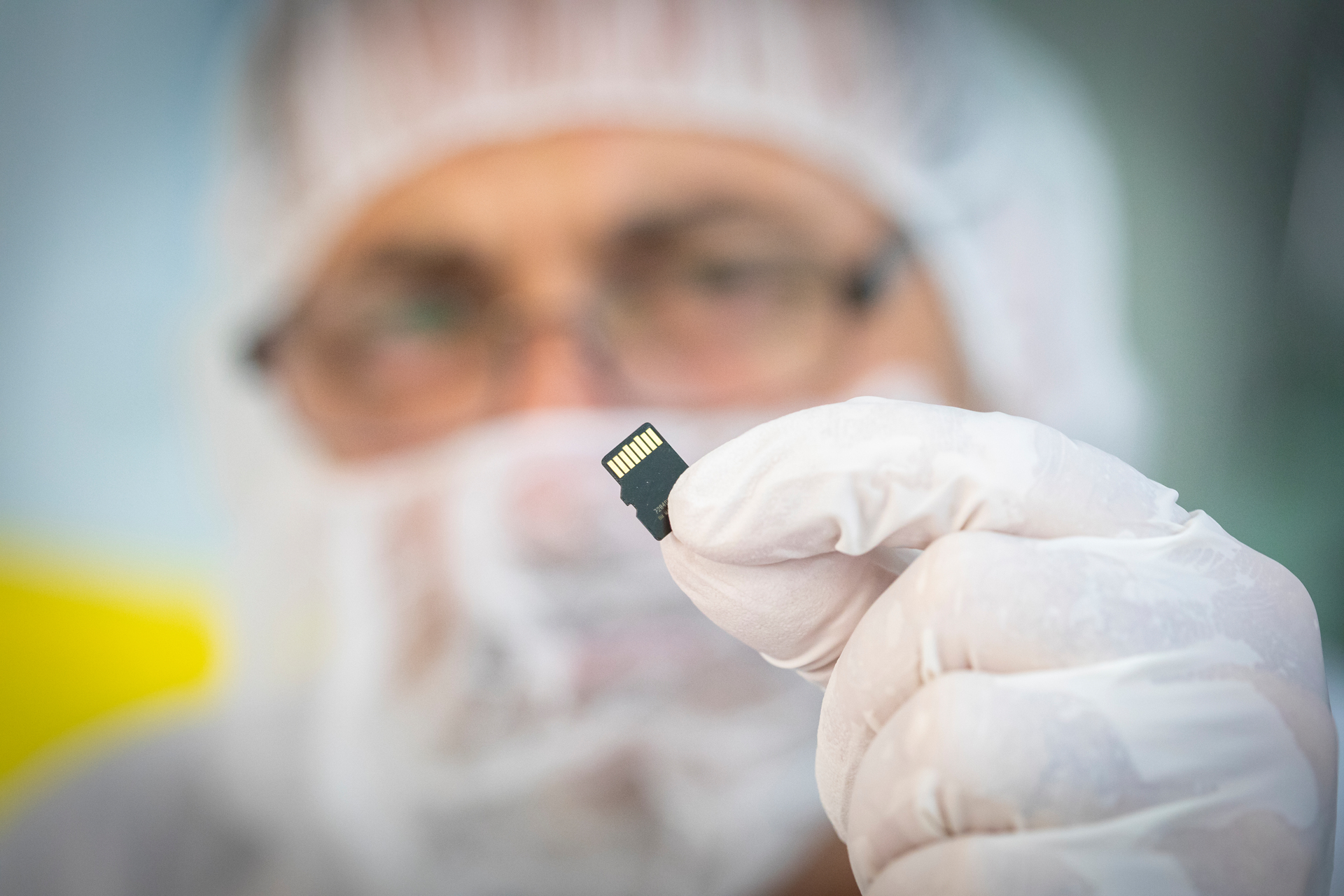

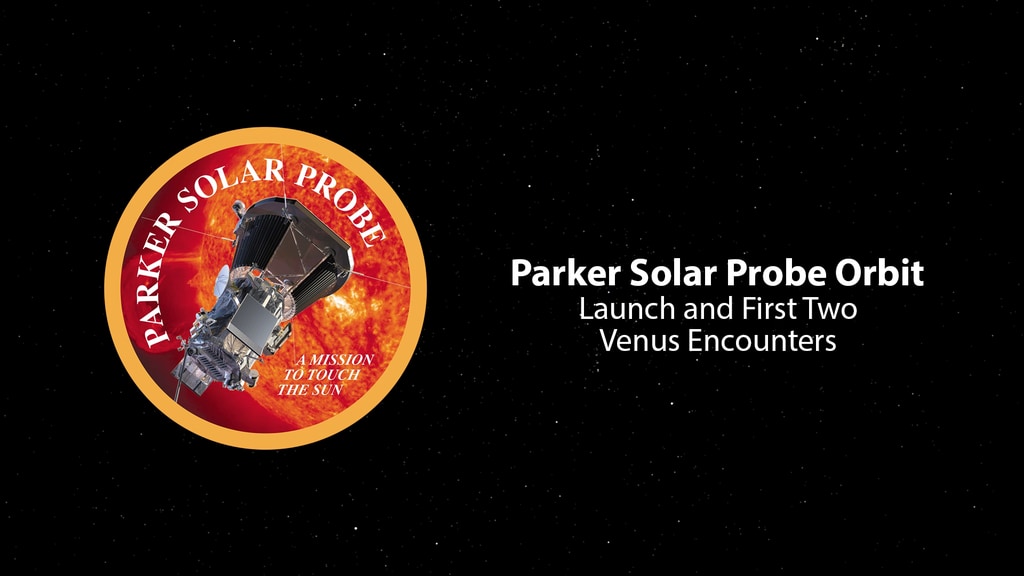
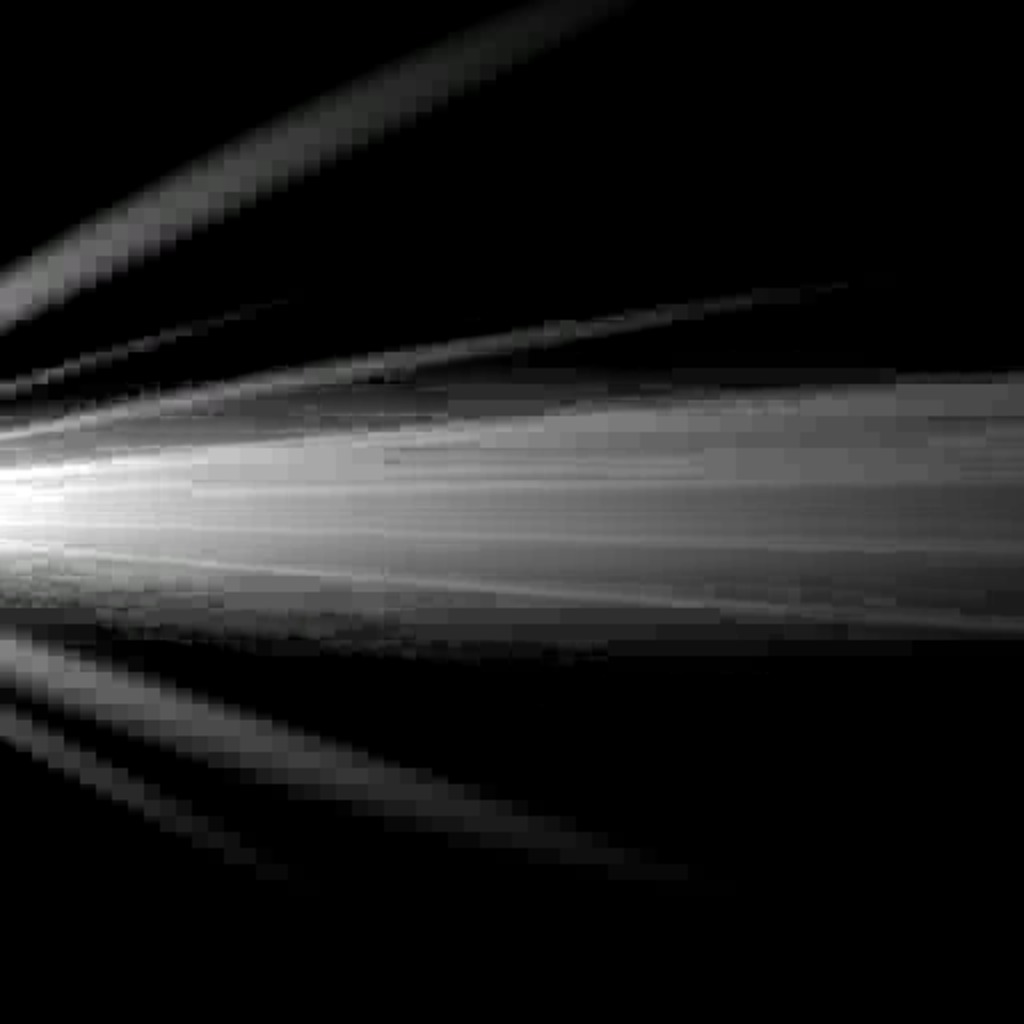
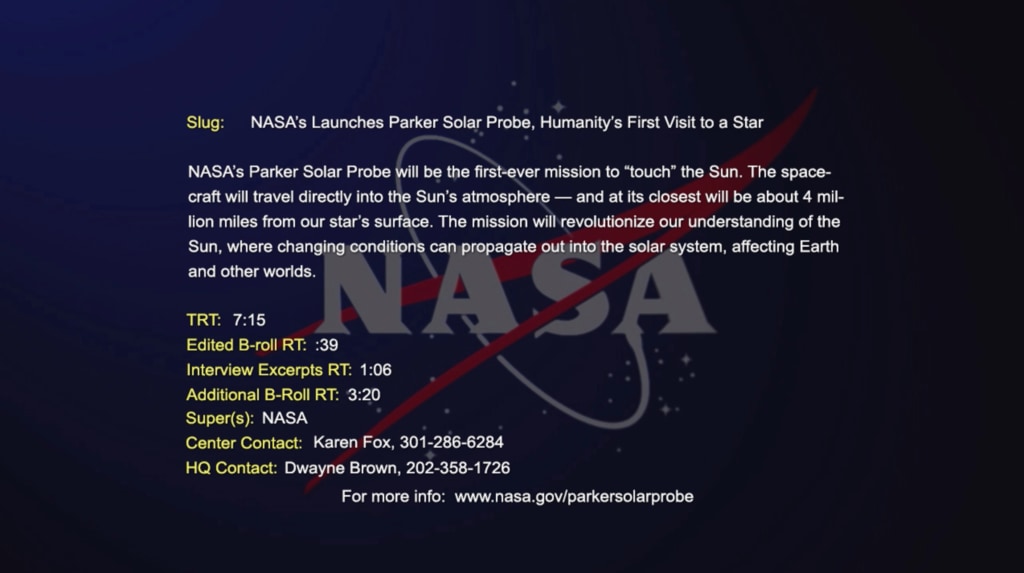
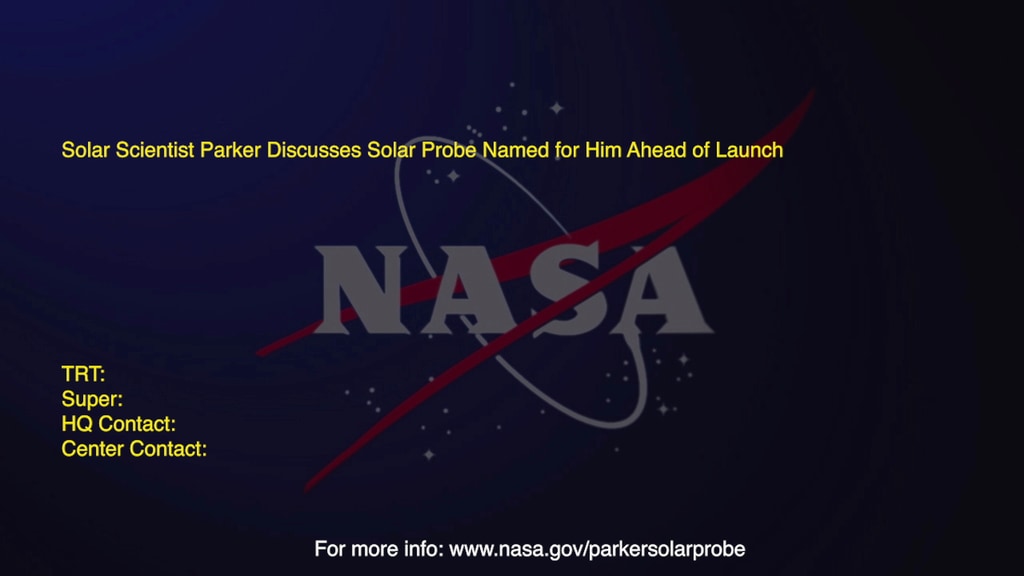
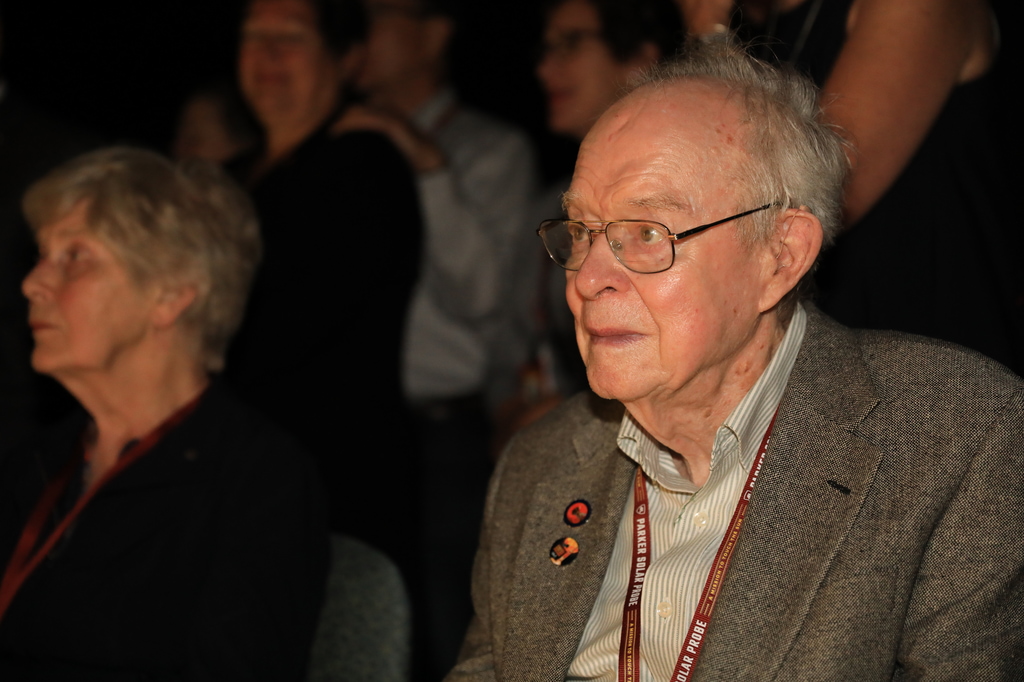
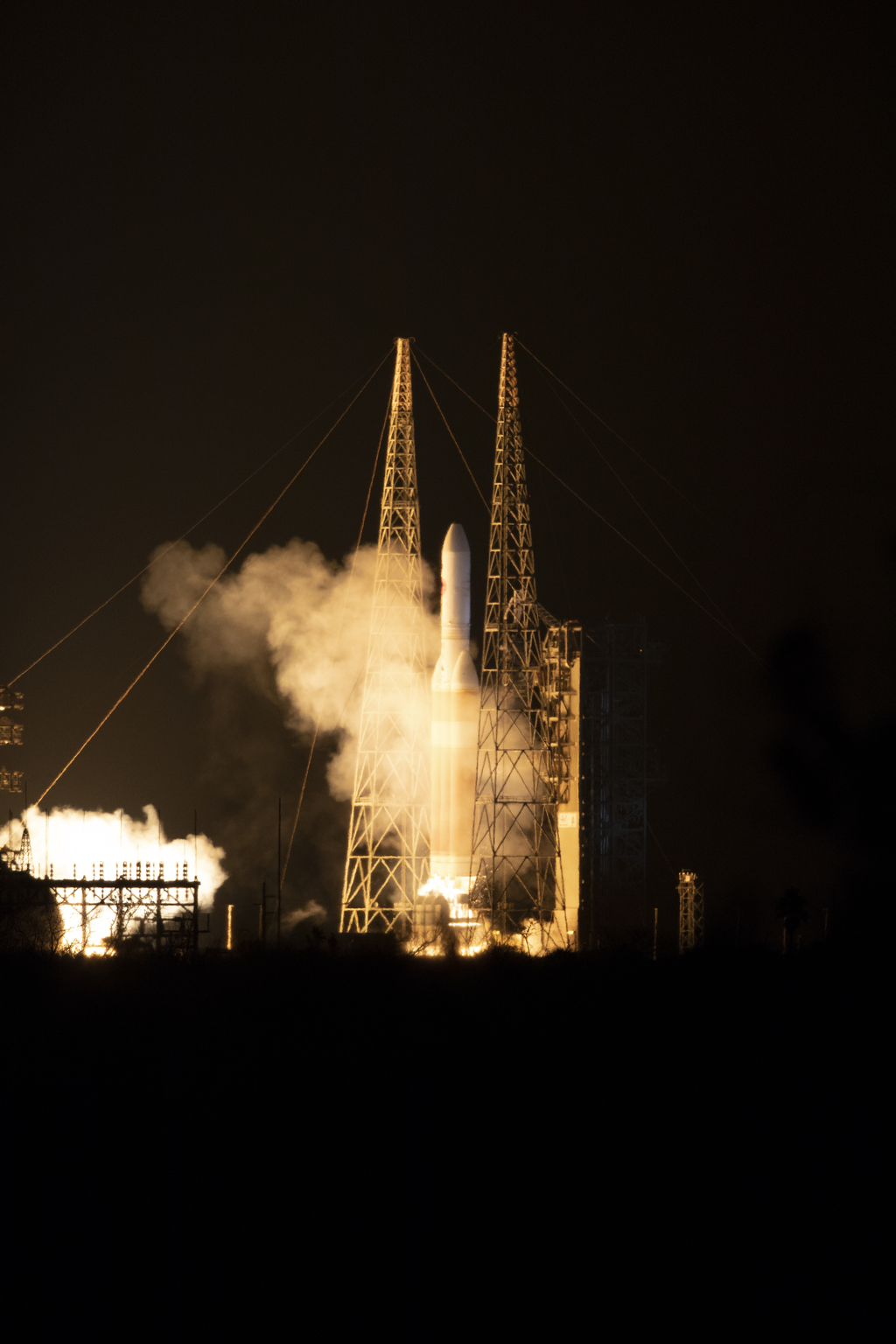


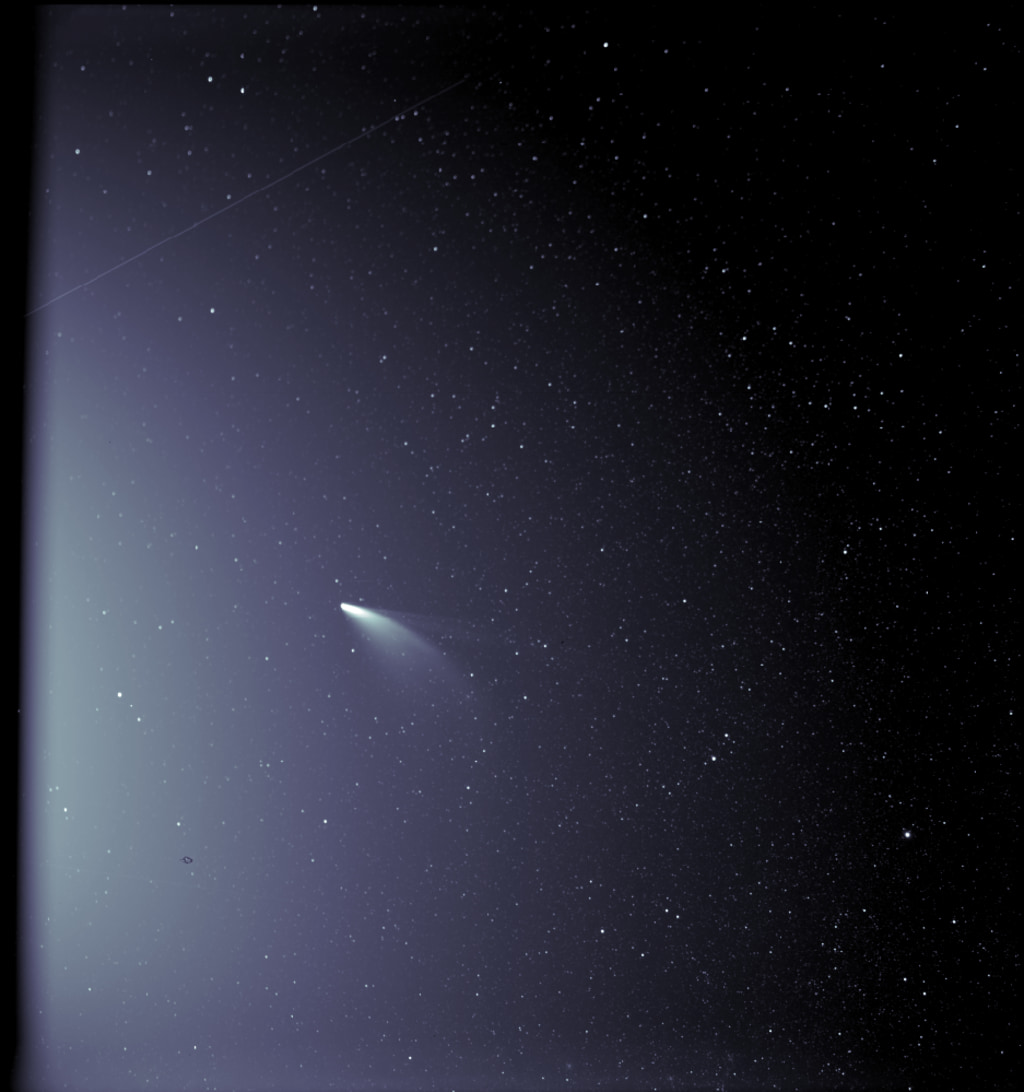
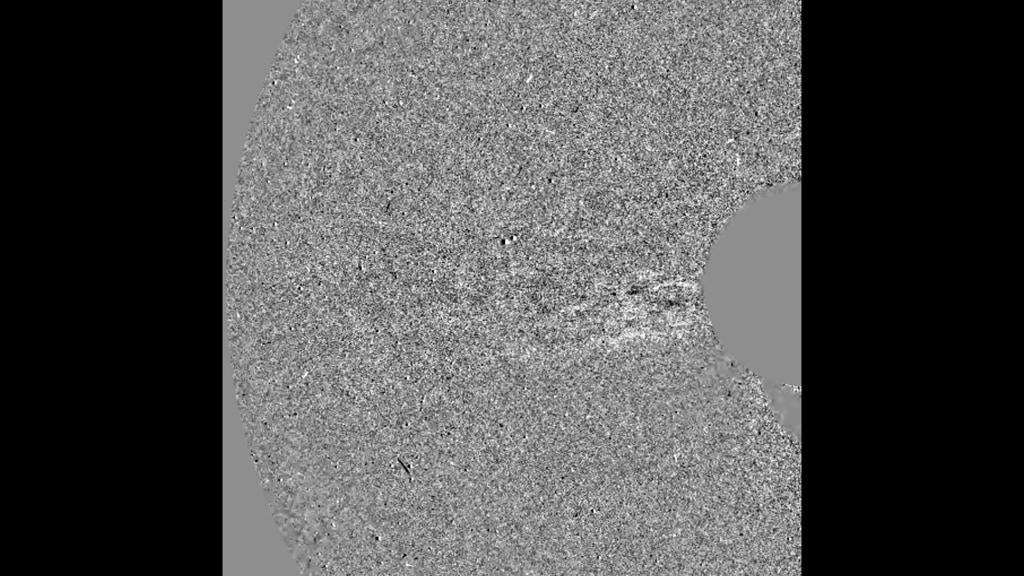


![Can You Solve NASA’s #3point8 Puzzles?Music Credit: “Laser Cycle Launch Party” by Aaron Michael Wittrock [ASCAP], Julian Daniel Anderson [BMI], & Forrest Reed [ASCAP] via Universal Production MusicProducer: Beth Anthony (eMITS)Writer: Miles Hatfield (eMITS)](/vis/a010000/a014700/a014736/14736_3point8Promo_thumb.png)
![PRODUCED VIDEOMusic credit: “Closer to You” by Sam Cleeve [PRS] by Universal Production Music.Watch this video on the NASA Goddard YouTube channel.Complete transcript available.Additional footage credits: 00:00-00:12 (University of Chicago)00:24-00:28 (University of Chicago)00:29-00:40 (Photo credit: Emilio Segrè)01:32-01:36 (University of Chicago)01:41-01:50 (University of Chicago)01:57-02:04 (University of Chicago)02:05-02:10 (Photo credit: University of Chicago)](/vis/a010000/a014100/a014120/14120_EugeneParker_YouTube.00065_print.jpg)

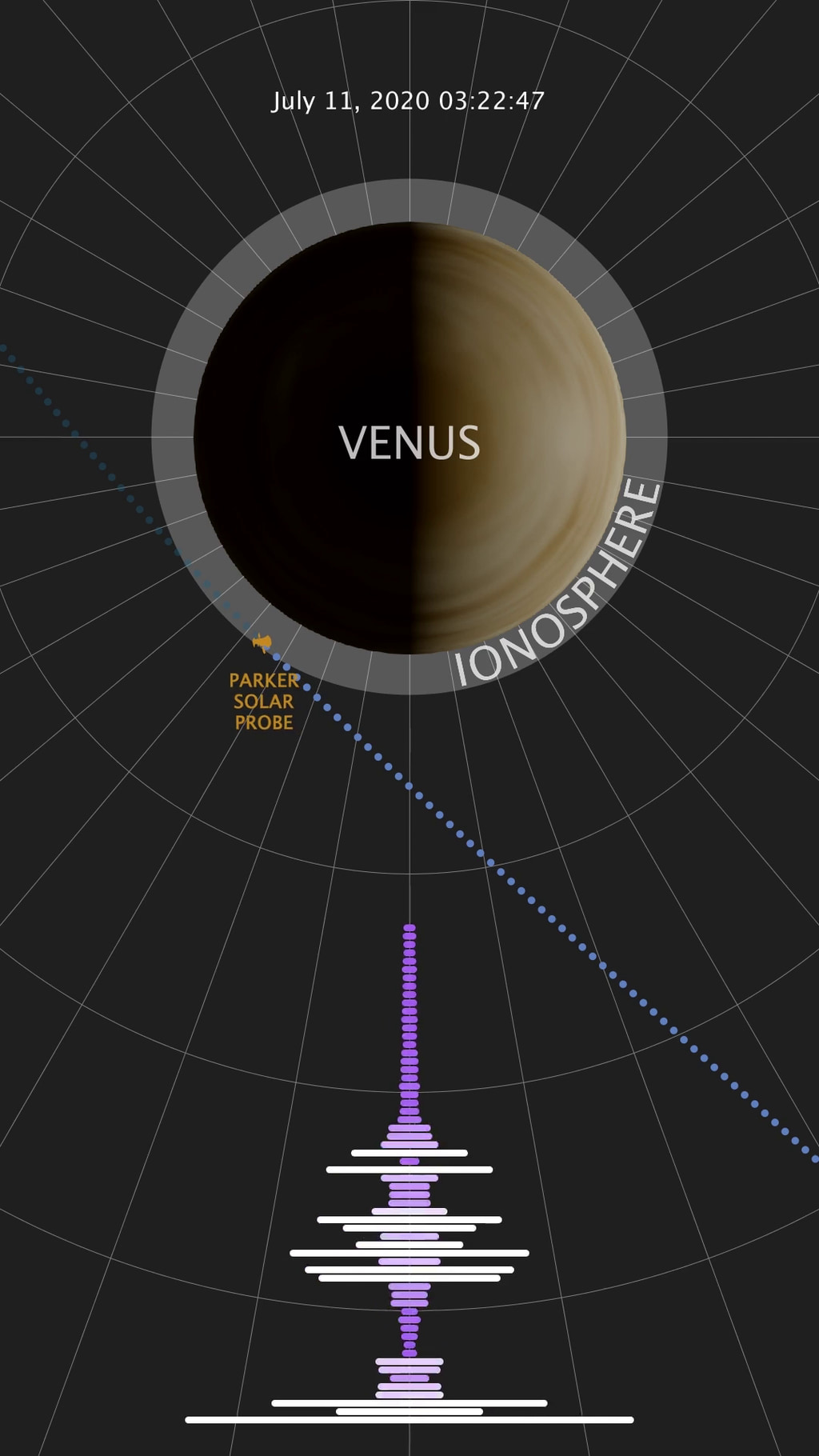




![Trailer without text introduction. Music credit: Luminous Skies [Underscore] by Andrew Prahlow from www.killertracks.comComplete transcript available.Watch this video on the NASA Goddard YouTube channel.](/vis/a010000/a012900/a012911/1080trailer_updated_animation2_youtube_1080.02350_print.jpg)
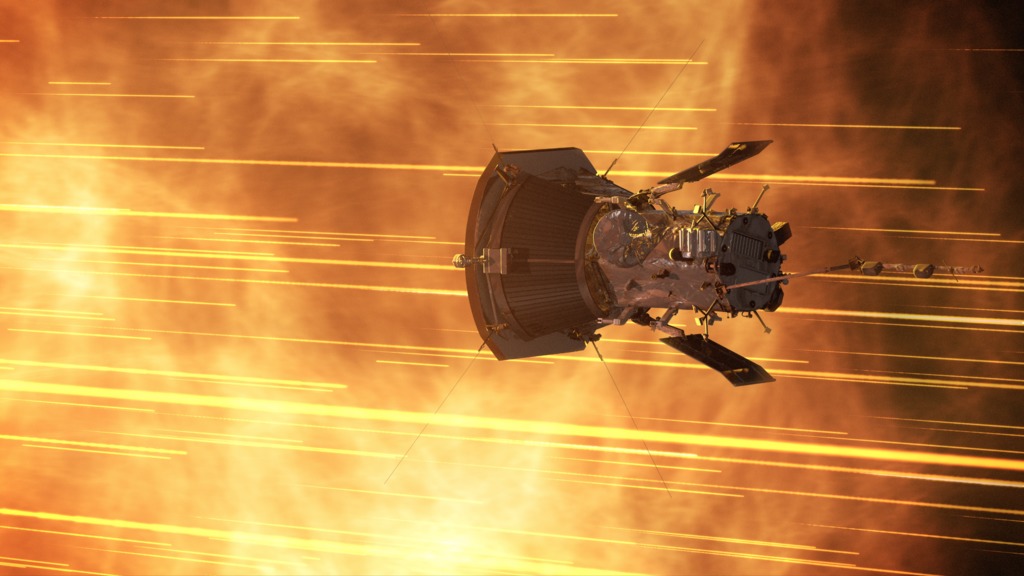
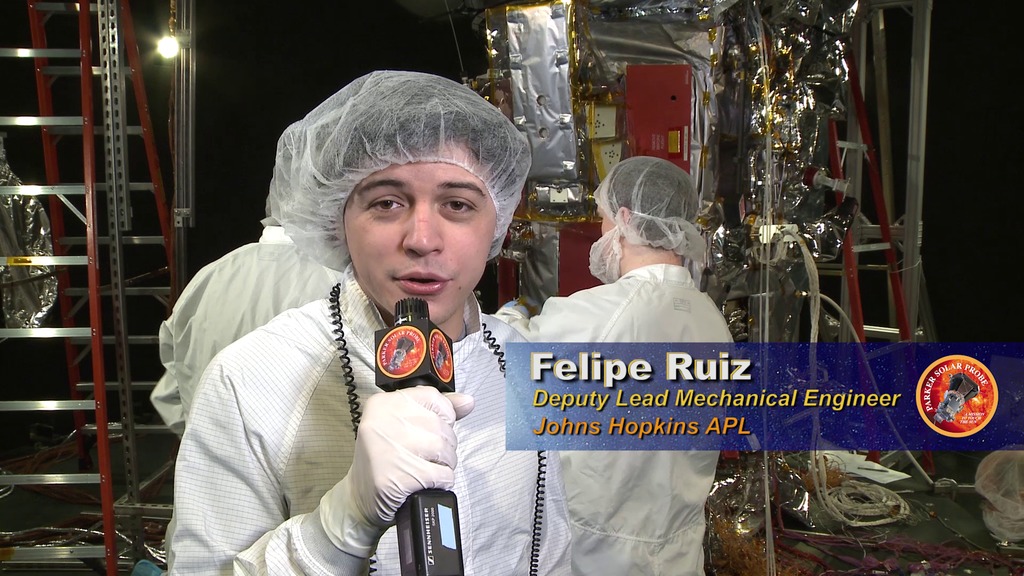
![Send Your Name to the Sun with Parker Solar Probe Promo - William ShatnerMusic Credit: Killer Tracks - Track Title: Chasing the Sunset [KT355]](/vis/a010000/a012800/a012882/12882_Send_Your_Name_to_the_Sun.00145_print.jpg)

![Music credit: Cheeky Chappy [Main Track] by Jimmy Kaleth, Ross Andrew McLean from www.killertracks.com This music requires a license for use.Watch this video on the NASA Goddard YouTube channel.Complete transcript available.](/vis/a010000/a012800/a012867/meltthumb.jpg)

![Discovering the Sun’s Mysteriously Hot Atmosphere Something mysterious is going on at the Sun. In defiance of all logic, its atmosphere gets much, much hotter the farther it stretches from the Sun’s blazing surface.Temperatures in the corona — the Sun’s outer atmosphere — spike to 3 million degrees Fahrenheit, while just 1,000 miles below, the underlying surface simmers at a balmy 10,000 F. How the Sun manages this feat is a mystery that dates back nearly 150 years, and remains one of the greatest unanswered questions in astrophysics. Scientists call it the coronal heating problem.Watch the video to learn how astronomers first discovered evidence for this mystery during an eclipse in the 1800s, and what scientists today think could explain it.Music credits: 'Developing Over Time' by Ben Niblett [PRS], Jon Cotton [PRS], 'Eternal Circle' by Laurent Dury [SACEM], ‘Starlight Andromeda' by Ben Niblett [PRS], Jon Cotton [PRS]Coronal spectrum image credit: Constantine EmmanouilidiComplete transcript available.Watch this video on the NASA Goddard YouTube channel.](/vis/a010000/a012900/a012903/CHP_Discovery_1080_4.00001_print.jpg)

